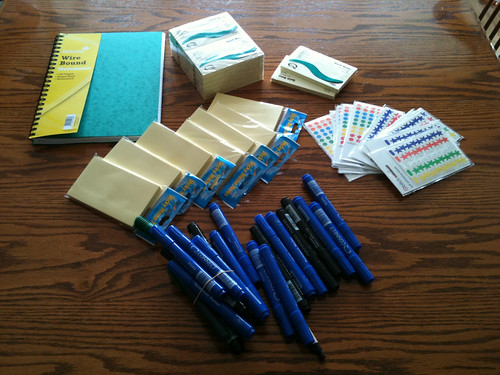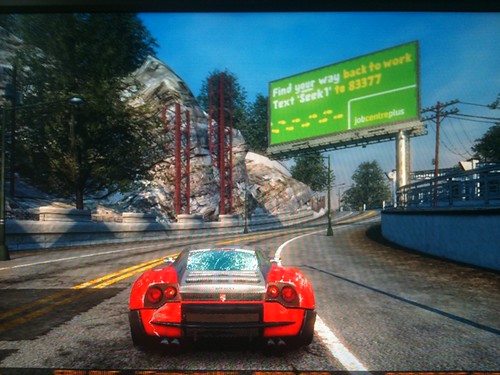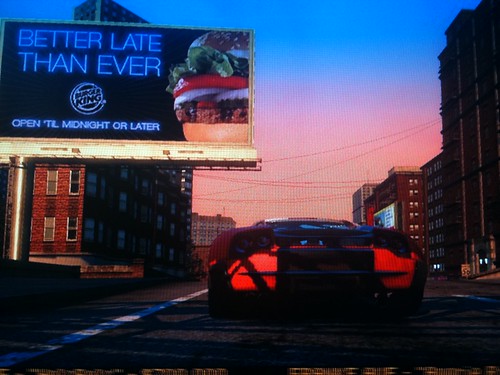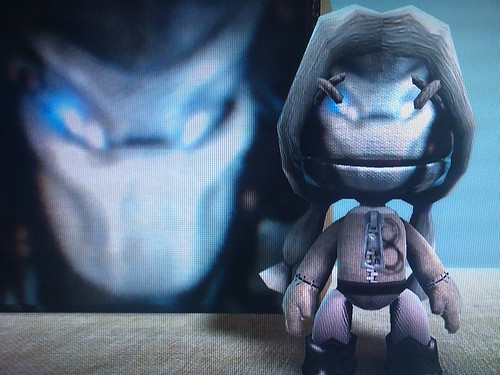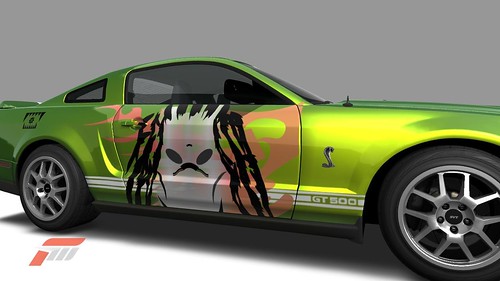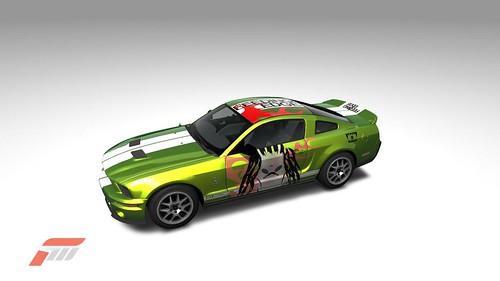I have a mini side project for an iphone application that I want to get submitted as soon as possible this year. Mainly this is to test the process. It has caused me to start doing some things that are clearly not my forte. i.e. Graphic design. I have no problem using any of the graphic design tools, and I really quite enjoy them, but my results are always…. well… meh.
For the app I needed to create some original visuals, as for a proof of concept I had used some 3d models from elsewhere just to get a feel for this. What I was aiming for was something fishlike.
This is what I have got too so far using the wonderful Cheetah 3d on the mac.
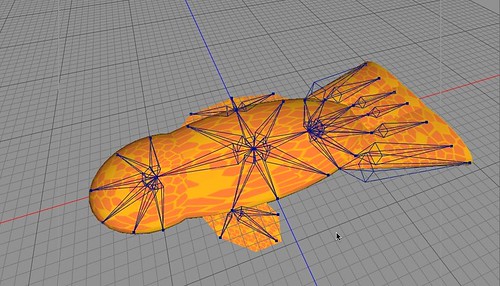
Now bear in mind I am a techie not a visual designer, but I did have to use a few things here.
I created the mesh from initial prim shapes in cheetak, then joined and imported them into a single mesh.
I created a set of character joints, the blue skeleton elements showing then had to remember ho to create the skeleton tag on Cheetah and drag it across to the properties to bind the skeleton to the mesh. (All this is bread and butter stuff to a good designer and animator of course!)
The texture, such as it is was using photoshop elements to create a stained glass window effect, then create another one one top of that in order to get some randomness and mess it up a bit.
Then I created some poses, remembering in Cheetah to create the pose once the root node for the pose had been selected. It was then a case of moving the joints around and saving each state.
Finally in Cheetah I created some animations, setting poses and timelines and key frames before saving the thing.
Then sparked up unity Iphone and dragged the poor fish like thing into the environment. Here the animations just played.
Hit publish and Xcode gets sparked up, the app gets deployed and running on the test Iphone.
Not a piece of code written, all config and clicking.
Of course now I can do what I know I can do. Write code to make the things happen in the way I want them too.
I will of course have to revisit the “Fish” maybe put some more bones in, try some smoother textures or try and draw it as one mesh not a bunch of lumpy prims. The trouble is I know it will never look as good as someone who really does this stuff.
Doing this though, and I recommend all tech and biz people give it a go in some for, does give you an appreciation of the visual design skills of those around you. I think too often it is taken for granted. I think the same can be said for good code though. The things under the covers, such as in this tool chain with the Mac OS, Cheetah 3d, Unity 3d and the Iphone OS none of which got in the way of the idea.
Trying to make things in different domains to ones we are used too, with tools that we are not skilled in using is a great way to understand what others do, what is good and what is mediocre. “Web 2.0 is Web Do” extends to many more things. Its a new decade give something a go, just so you either know how hard it is or you may find a new talent 🙂
